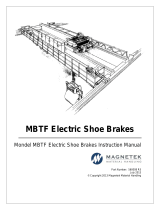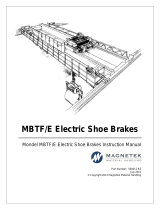Page is loading ...

POWX910 EN
Copyright © 2019 VARO P a g e | 1 www.varo.com
1 APPLICATION .................................................................................. 2
2 DESCRIPTION ................................................................................. 2
3 SYMBOLS ........................................................................................ 2
4 SAFETY WARNINGS ....................................................................... 2
5 ASSEMBLY (FIG. A) ........................................................................ 2
6 USE ................................................................................................... 3
7 INSPECTION AND MAINTENANCE ............................................... 3
8 TECHNICAL DATA .......................................................................... 3
9 ENVIRONMENT ............................................................................... 4
10 DECLARATION OF CONFORMITY ................................................ 4

POWX910 EN
Copyright © 2019 VARO P a g e | 2 www.varo.com
PIVOTING ARM FOR HOIST
POWX910
1 APPLICATION
The pivoting arm is designed to have one hoist attached to it. The pivoting arm must be
mounted on a well-attached steel rod for this purpose, which has a diameter of 48 mm.
2 DESCRIPTION
1. Bottom support
2. Clamping block
3. 2 bolts (M12 x 60 mm)
4. Upper support
5. Supporting arm
6. Cotter pin
7. Pivoting arm
8. Large cotter pin
9. Extension pipe
10. Bolt (M12 x 70 mm)
11. Bolt (M8 x 60 mm)
12. Rubber saddles
3 SYMBOLS
In this manual and/or on the machine the following symbols are used:
Denotes risk of personal injury
or damage to the tool.
Read manual before use.
In accordance with essential applicable safety standards of European
directives.
4 SAFETY WARNINGS
Be sure to take the following points into account, so as to avoid accidents and injury:
▪ Do not overburden the pivoting arm.
▪ In case of damage, do not continue to use the pivoting arm.
▪ For your own safety, make sure that all screws have been properly tightened and check
these regularly.
▪ Always make sure that the cotter pins are properly fastened in the drill holes.
▪ It is strictly forbidden to transport persons with the hoist.
▪ In addition, persons may not stand under the hoist or pivoting arm.
▪ A person that has not been informed about these safety regulations may not use this
product.
▪ All components must be regularly checked for possible deformations or damages.
▪ Always observe the maximum allowed load!
5 ASSEMBLY (FIG. A)
▪ Position of the lower support (1) at the desired working height against a vertical steel tube,
which has a diameter of 48 mm and a wall thickness of at least 4 mm, and which surface
is not too smooth, to ensure a better grip.
▪ Assemble with the clamping block (2) by means of 2 M12 x 60 mm bolts (3) and M12 nuts,
using Ø 12 mm spring washers and Ø 12 mm flat washers, and tighten properly (bolts
must be tightened to 70 Nm minimum).
▪ Install of the upper support (4) and the clamping block (2) in the same manner. Make sure
that they are both installed in the same direction. The distance between both must be 420
mm, measured from the underside to the underside.
▪ Hook one side of the support arm (5) into the hinge pin of the upper support (make sure it
is positioned in the correct direction), and secure it by inserting a cotter pin (6) in the hole
of the hinge pin.

POWX910 EN
Copyright © 2019 VARO P a g e | 3 www.varo.com
▪ Hook the lower pivoting arm (7) on the hinge pin of the lower support and secure it by
putting a large cotter pin (8) through the hole of the pin.
▪ Attach the loose part of the support arm (5) to the lower pivoting arm (7) by using an M12
x 70 mm bolt (10), an M12 nut, a Ø 12 mm spring washer and a Ø 12 mm flat washer
(pos. B).
6 USE
▪ Before being taken into use, all components must be inspected. The vertical support pillar
must be robust. The components of the pivoting arm must be undamaged and free of
cracks. The support arms must be firmly attached.
▪ The supporting pillar must be in a good vertical position. The cable will only be correctly
wound up on the attached winch, when the pivoting arm is located in a good horizontal
position.
▪ The maximum load amounts to 600 kg at a distance of 750 mm relating to the vertical
support pillar. For lifting this load, use the pivoting arm that has been installed as
described above.
▪ Attention: With POW903 this pivoting arm cannot handle the double capacity of up to 800
kg.
▪ For lifting loads with a maximum of 300 kg (POW900 or POW901 and POW902 without
double capacity), one can use the pivoting arm up to 1100 mm. Attach both parts of the
arm to one another, by inserting a M12 x 70 mm bolt (10) in the second hole (pos. C) in
the extendable part (9). Attach the M8 x 60 bolt (11) with an M8 nut, Ø8 mm spring washer
and Ø8 mm flat washer in the first (smaller) hole of the extendable part (pos. A); this
prevents the hoist from slipping off the support arm during use.
▪ The load may never exceed the maximum permitted value.
▪ Standing under a pivoting arm under load is not permitted.
▪ Caution: The provided rubber saddles (12) serve as adapters, for attaching the hoist to the
extendable pivoting arm. The brackets themselves are delivered as part of the electrical
hoists. They are not part of the components of this pivoting arm.
▪ Before use, first of all a lifting test and a pivoting test without load have to be performed. In
the further course of the test the load should be increased evenly step by step. After this
test, the required torque of 70 Nm for the mounting bolts has to be checked.
7 INSPECTION AND MAINTENANCE
▪ Regularly inspect the supporting pillar. It must be solidly attached and may not be bent.
Also check the rigidity and check that the supporting pillar still stands in a proper vertical
position.
▪ Regularly check the components of the pivoting arm. It may not be damaged (dents,
cracks, etc).
▪ Check all connections (bolts/nuts). They must be properly tightened.
▪ A defective pivoting arm is not repairable - it must be replaced immediately.
▪ The load may never exceed the maximum allowed values.
▪ It is not allowed to stand under the pivoting arm when this component is under load.
▪ It is strictly forbidden to lift a load simultaneously with 2 hoists.
▪ It is not allowed to lift up people with this hoist.
▪ Helpers and children should be kept away from the working area, when this tool is in use.
▪ Inexperienced persons may not operate this tool.
8 TECHNICAL DATA
Max. load at 750 mm
600 kg
Max. load at 1150 mm
300 kg
Rotation
50° to the left and 50° to the right

POWX910 EN
Copyright © 2019 VARO P a g e | 4 www.varo.com
9 ENVIRONMENT
Should your appliance need replacement after extended use, do not dispose of it
with the household refuse, but in an environmentally safe way.
Waste produced by electrical machine items should not be handled like normal
household rubbish. Please recycle where recycle facilities exist. Check with your
Local Authority or retailer for recycling advice.
10 DECLARATION OF CONFORMITY
VARO N.V. - Joseph Van Instraat 9 - BE2500 Lier - BELGIUM, declares that,
Product: PIVOTING ARM FOR HOIST
Trade mark: POWERplus
Model: POWX910
is in conformity with the essential requirements and other relevant provisions of the applicable
European Directives as they relate to European harmonized standards. Any unauthorized
modification of the apparatus voids this declaration.
European Directives (including, if applicable, their amendments):
2006/42/EC
German test standard ; 2 PfG 2364/08.2013
The undersigned acts on behalf of and under the power of attorney granted by the company
management,
Hugo Cuypers
Certification Manager
Lier, 21/11/2018
/








